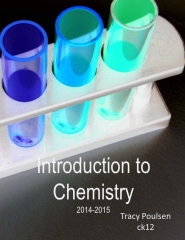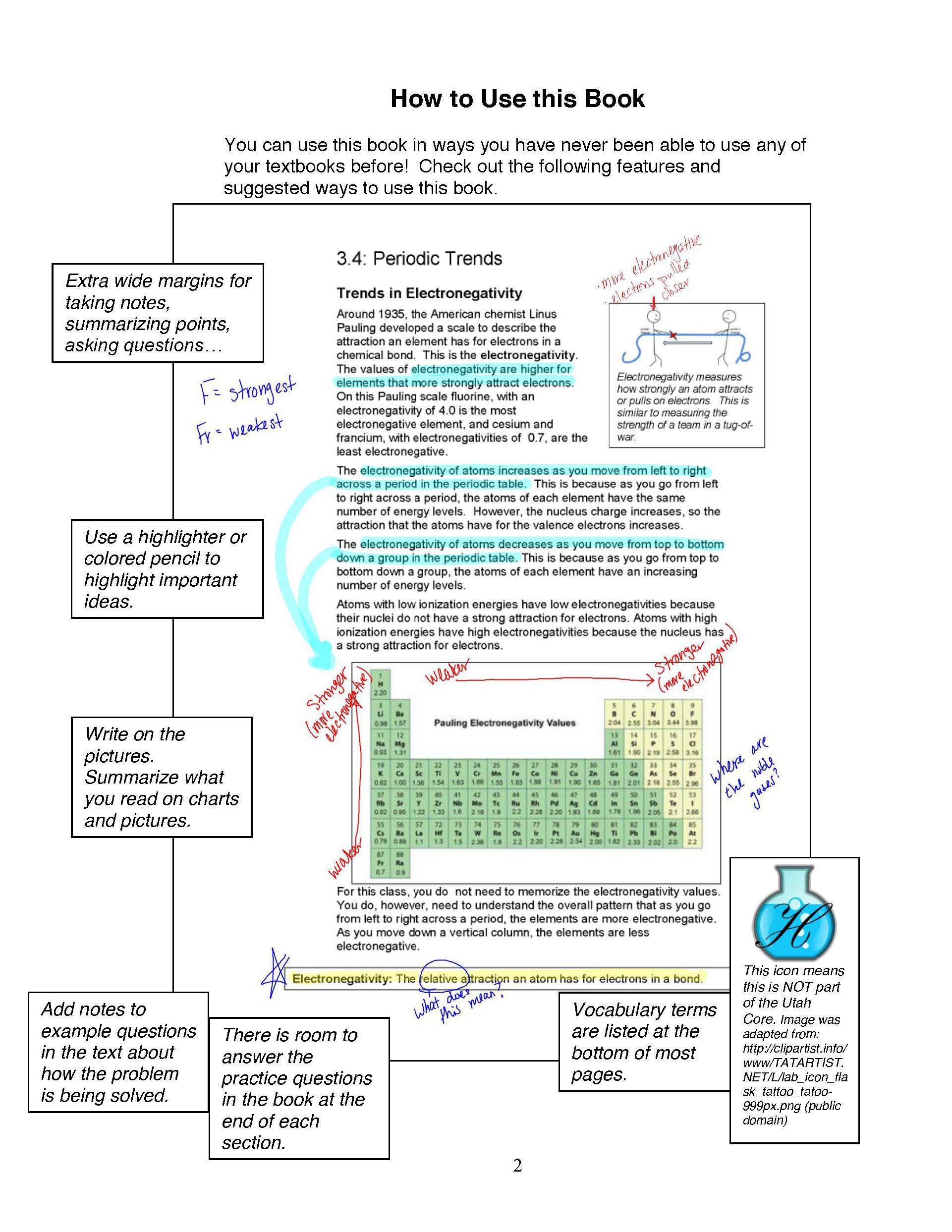Implementation
Implementation of OER
In 2010, David Wiley from Brigham Young University contacted Nebo school district about piloting an OER program. The pilot was conducted by the Utah Open Textbook Project, a partnership involving BYU, Nebo School District, and the Office of Education. Teachers from Spanish Fork High School, Payson High School, and Payson Junior High School worked together over the summer to develop the first science OER in the district.
Tracy Poulsen, Spanish Fork chemistry teacher lead the development of the first chemistry OER in the district. For the first iteration of the OER chemistry materials, the teachers primarily used the content available on the CK-12 platform. The CK-12 website has free open source K-12 materials that can be modified and mixed, as needed. The content was contained in flexbooks, where the teachers selected specific chapters and content to include in the digital materials.
One of the key changes in the chemistry OER from the traditional textbook is that the teachers targeted the  state chemistry curriculum in the order in which they wanted to teach the material. Take a look at the 2015-16 Chemistry flexbook.
state chemistry curriculum in the order in which they wanted to teach the material. Take a look at the 2015-16 Chemistry flexbook.
Poulsen states that in the next school year she is moving towards using the digital version. So far, she has primarily used the printed version in her instruction.
For the printed version, students can analyze what they read on charts and pictures. The flexbook has extra wide margins for note taking and summarizing  points. Students can use a highlighter or colored pencil to highlight important ideas. With the flexbook, students are able to create their own content by adding to the materials, furthering self-directed learning.
points. Students can use a highlighter or colored pencil to highlight important ideas. With the flexbook, students are able to create their own content by adding to the materials, furthering self-directed learning.
As Poulsen transitions to using the digital version, she recognizes that one of the benefits is that the content is searchable and that students can edit and add to the materials in new ways. Poulsen states that, “one of the challenges in using the digital version is in developing new ways to actively teach literacy strategies to my students, such as identifying and highlighting important texts and using digital graphic organizers to summarize information”.
Brian Blake from Payson High School developed the OER for AP Biology, Biology, and Anatomy. According to Blake, “the real growth in the Biology OER came when other teachers brought their experiences to the table. Then we had multiple brains of knowledge adding to the content”. Blake states that over the last three years, he has used the Biology OER books in both print and digital format. In the first year, the majority of the higher level students seemed to prefer the printed version because they could highlight, bookmark and personalizing their books for the first time. Overall, the school is working to shift to digital instructional materials and the transition is still in process.
Each summer, teams of district teachers meet to update the OER materials; constantly adding additional resources and images, including student feedback. During this process, reviewers target areas where students are struggling or where they have misconceptions. In addition, specific textbooks were edited to meet the expectations of concurrent enrollment courses at Utah Valley University
All of the science materials are used school-wide. Additionally, three of the five high schools in the district are now using the OER chemistry materials as well as several classes in neighboring districts.
Content Delivery
The Open Textbook Project envisioned that as each new version is readied, the district could distribute the digital content in common standard formats that include PDF, ePub, or HTML; or the district could choose to print out a sufficient quantity on demand and give each student a copy that can be written in, highlighted, and kept.
In Nebo, Payson High School provided the OER materials in both digital and printed formats for students. The materials are available for students, teachers, parents, and administrators. The printed format costs approximately $5 each compared to $80 for a textbook. So far, the print format is the preferred version for educators and students.
Research and Evaluation
Nebo School District does not have specific research to link the use of OERs to student achievement. However, empirical evidence from Poulsen shows that after implementing OERs and teaching literacy strategies, student test scores increased. Blake also reported that he was able to teach learning techniques along with content because the students had a book that was relevant to his specific class and core content.
-
“Beyond potential cost savings, OERs encourage both teachers and students to be more invested in the content itself. The teacher who selects the content or re-mixes it develops a sense of ownership for that content. The students also recognize that the OER was customized for their class by their own teacher.”
- Cory Little, Nebo School District
-
One of the key changes in the chemistry OER from the traditional textbook is that the teachers targeted the state chemistry curriculum in the order in which they wanted to teach the material.
-
“I appreciated the fact that I could write notes in my book and underline things that I needed to study. you should definitely keep the practice problems and step-by-step equations, they helped me a ton.”- Spanish Fork High School Student
-
“The real growth in the Biology OER came when other teachers brought their experiences to the table. Then we had multiple brains of knowledge adding to the content.”
- Brian Blake, Payson High School Biology Teacher
-
Each summer, teams of district teachers meet to update the OER materials; constantly adding additional resources and images, including student feedback.
